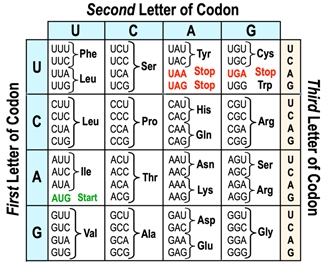In this video, we're going to do a review of transcription and translation. And so we're basically going to be reviewing, comparing, and contrasting transcription and translation. Notice that we have this table down below right here that we're going to fill out, and notice that this column right here is all about transcription, and this column over here is all about translation. In terms of the product that is formed, of course, transcription is going to be the process that uses DNA to build RNA. The product that's formed for transcription is an RNA molecule. In terms of translation, translation is going to be the process of using an RNA molecule to build a protein. The protein is going to be the product that is formed.
Now, in terms of whether there is a macromolecule change or a change in the class of macromolecule, it turns out that with transcription, there's no change in the class because it's going from DNA and using the DNA to build RNA. But DNA and RNA are both nucleic acids. It's going from DNA nucleic acids to RNA nucleic acids. Because they're both nucleic acids, there is no macromolecule change in terms of the classes of macromolecules. However, when it comes to translation, there is a macromolecule class change because we go from having RNA, which are nucleic acids, to having proteins, which are made of amino acids. What you'll see here is that going from nucleic acids to proteins is a change in the macromolecule class.
In terms of the major enzyme or structure that's involved with the process, for transcription, the major enzyme is going to be RNA polymerase, and that is going to be the main enzyme involved with transcription that builds the RNA. For translation, recall that the major enzyme or structure is going to be the ribosome. The ribosome is the primary structure involved with the building of the protein during translation.
In terms of the location of each of these processes, transcription, because it uses DNA to build RNA, and DNA in eukaryotes is found in the nucleus, the location of transcription for eukaryotes is going to be in the nucleus of the eukaryotic cell. Translation, on the other hand, is going to occur in the cytoplasm of the eukaryotic cell in the outside of the nucleus. In terms of the direction of synthesis for the particular molecule that's being made, the RNA molecule during transcription, its direction of synthesis is from 5' to 3'. The RNA molecule will be built from its own 5' end towards its own 3' end. The protein during translation, the direction of its synthesis is going to be from its N-terminal end, where the amino group is, to its C-terminal end, where the carboxyl group is.
This here concludes our brief review of transcription and translation, and we'll be able to get some more practice with transcription and translation as we move forward in our course. So I'll see you all in our next video.



